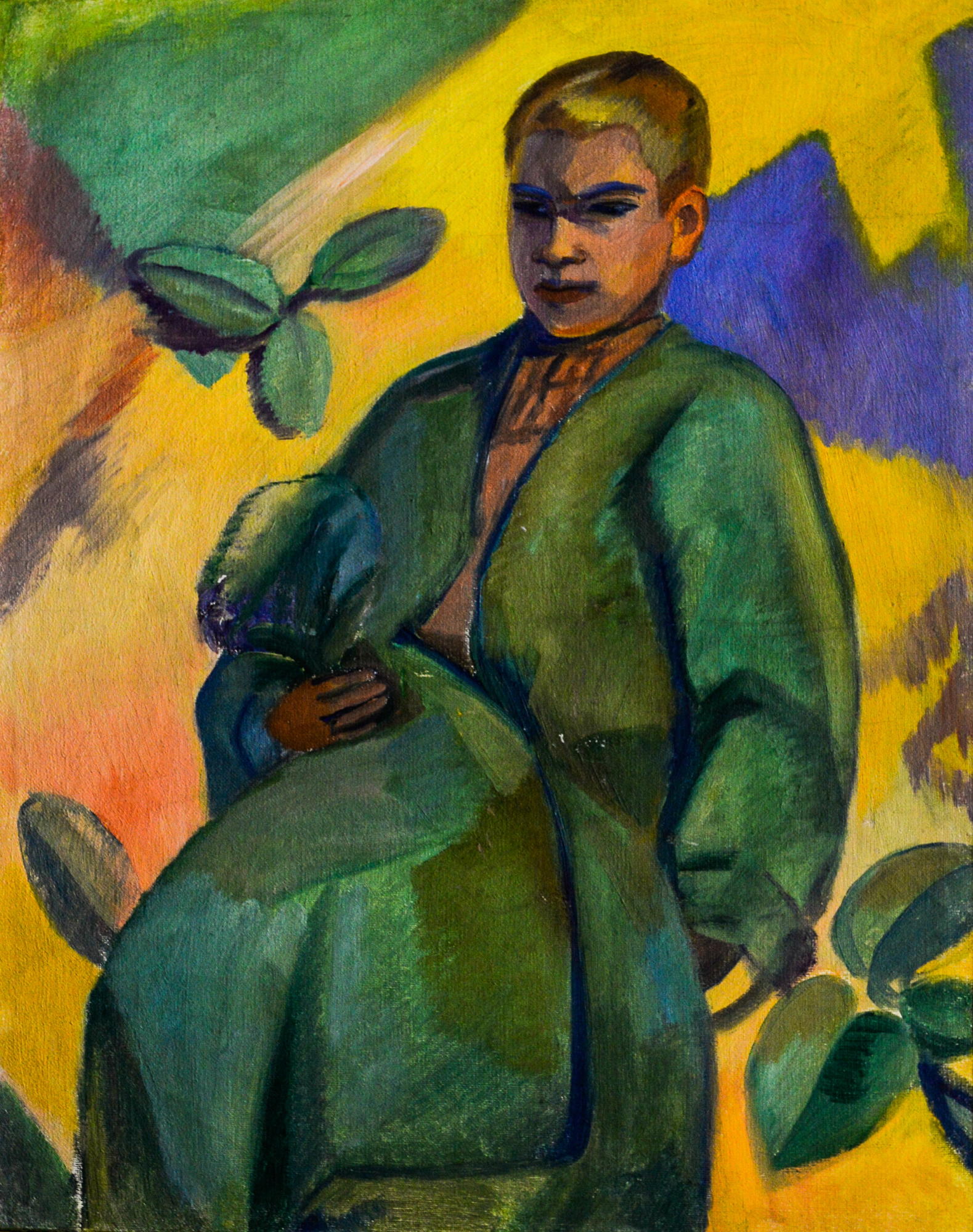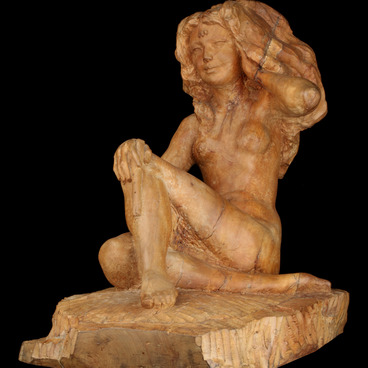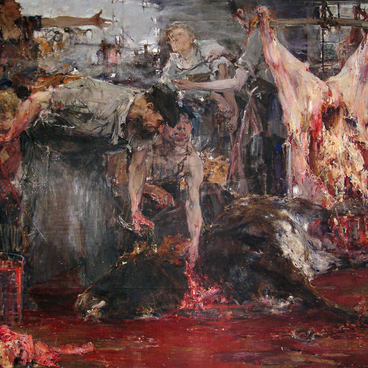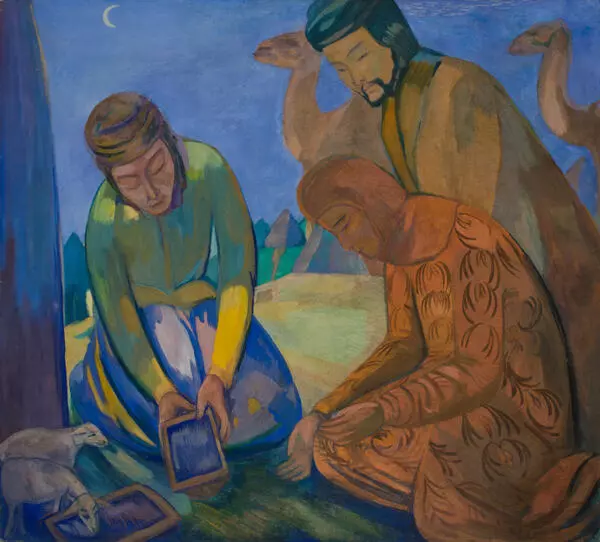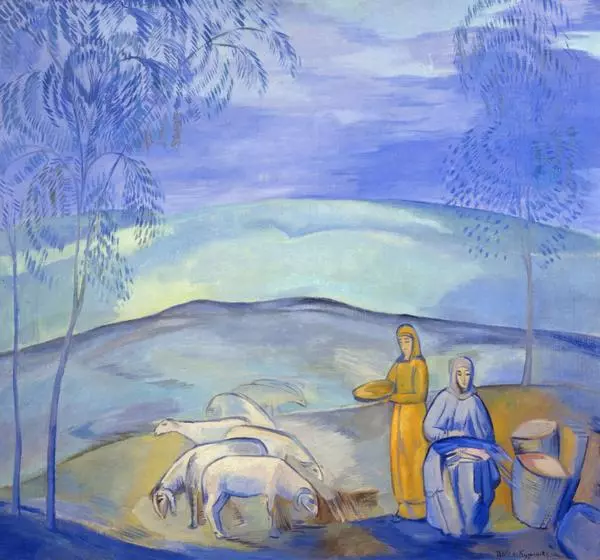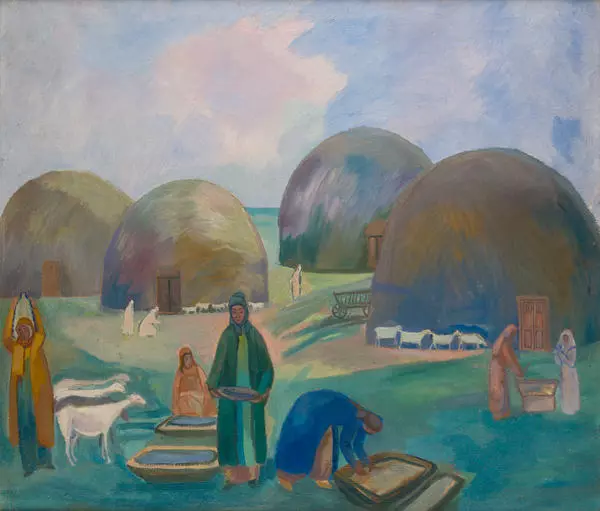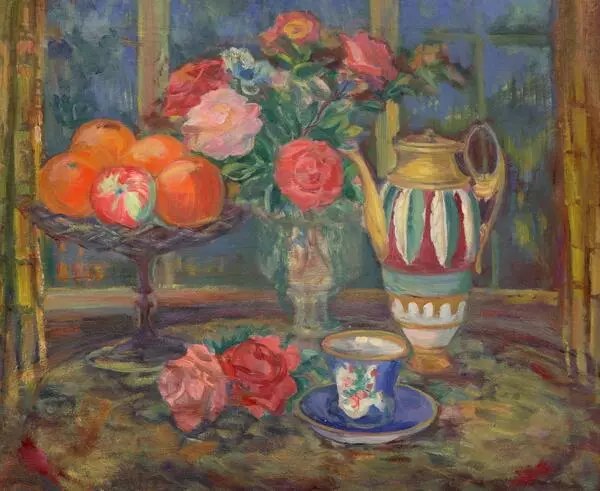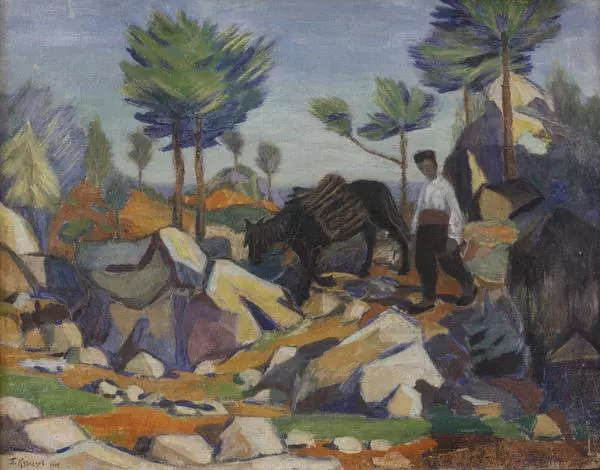Born into a family of icon painter from Saratov, Pavel Kuznetzov got fascinated by symbolism aesthetics when a teenager. He as well as his Saratov companions - sculptor Aleksandre Matveev and painter Petr Utkin, derived inspiration from artworks by master of symbolism Victor Borisov-Usatov, that mysterious beauty of Russian manor, which he managed to convey in his paintings. Later, during their study at Moscow School of Arts, Sculpture and Architecture the three of them initiated a students’ circle which later transformed into the “Blue Rose” society.
At Moscow School of Arts Kuznetsov became very close with Valeriy Brusov and other symbolists. He created illustrations for their journals “The Golden Fleece” and “Art”. In the streamline of symbolism he embarked upon themes of dreams and fata morgana, merging the reality of the perceptible world and unattainable reverie.
In 1097 Kuznetsov in collaboration with Utkin and Matveev arranged the first exhibition of the “Blue Rose” symbolists’ association, which was sponsored by Nikolay Ryabushinsky.
The name of the society was an allusion to the blue flower of Novalis as an eidolon of the impossible ideal. Members of the ‘Blue Rose’ considered themselves followers of Vrubel and Borisov-Musatov, adopting their subtle pastel shades.
In 1911-1913 Kuznetsov made several journeys to trans-Volga steppe and Central Asia.
That was a blissful period of his artistic journey. He discovered a new world - the infinite of steppe and deserts, the straight line of the horizon, the height of the sky dome, ordinary people, who lived on that bare land for ages, their sheep and camel herds, small yurtas. These journeys helped the artist overcome creative crisis and gave birth to ‘Steppe’ art cycle.
At Moscow School of Arts Kuznetsov became very close with Valeriy Brusov and other symbolists. He created illustrations for their journals “The Golden Fleece” and “Art”. In the streamline of symbolism he embarked upon themes of dreams and fata morgana, merging the reality of the perceptible world and unattainable reverie.
In 1097 Kuznetsov in collaboration with Utkin and Matveev arranged the first exhibition of the “Blue Rose” symbolists’ association, which was sponsored by Nikolay Ryabushinsky.
The name of the society was an allusion to the blue flower of Novalis as an eidolon of the impossible ideal. Members of the ‘Blue Rose’ considered themselves followers of Vrubel and Borisov-Musatov, adopting their subtle pastel shades.
In 1911-1913 Kuznetsov made several journeys to trans-Volga steppe and Central Asia.
That was a blissful period of his artistic journey. He discovered a new world - the infinite of steppe and deserts, the straight line of the horizon, the height of the sky dome, ordinary people, who lived on that bare land for ages, their sheep and camel herds, small yurtas. These journeys helped the artist overcome creative crisis and gave birth to ‘Steppe’ art cycle.
